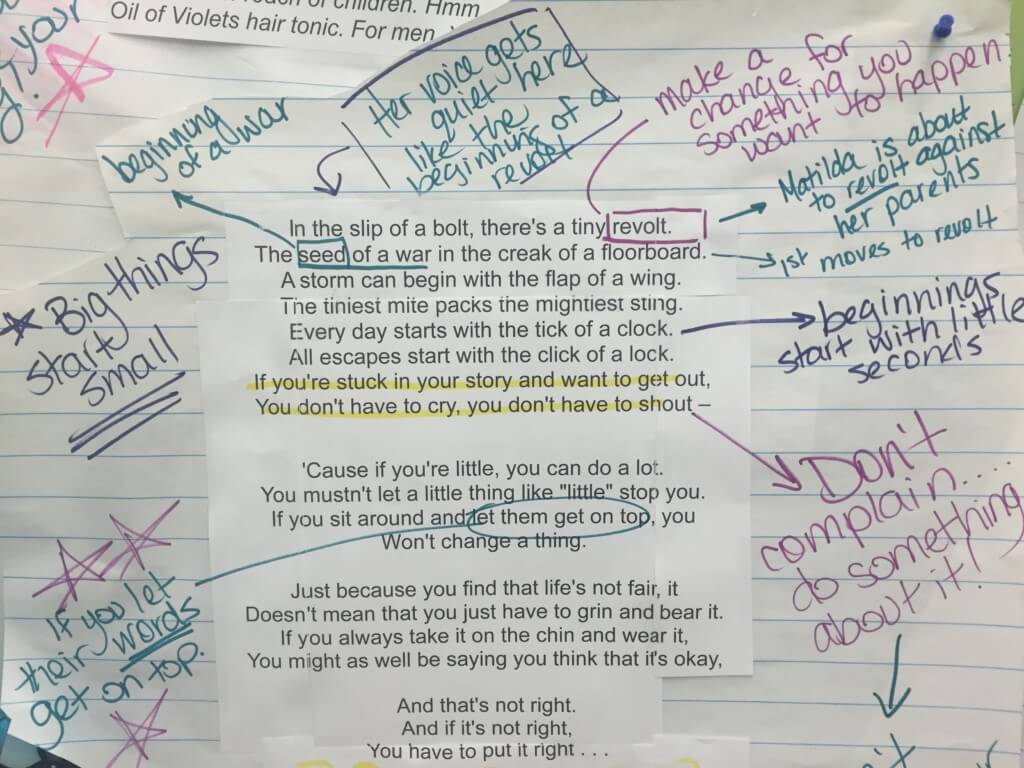You are on your way to an important meeting and need to pump yourself up on the way. What’s your go-to song that you put on? Is it because of the tone of the song or the message in the lyrics? Whatever the reason, you tapped into it and have made it an anthem.
Music has the power to transform us, and it can do the same for the readers in your classroom. Integrate music and literacy and watch active listening, reading, and critical thinking soar!
In-depth Analyzing
Students often struggle with analyzing text while reading. Dissecting the theme, tone and mood of narrative pieces can often be very challenging, particularly for struggling readers. Asking them to then add their own interpretations can be even more difficult.
However, once you ask them to do the same thing with lyrics in a piece of music, the barriers are lifted because music is something that everyone can interpret and dig into. In particular, students with learning disabilities will be successful and participate. The fear of having the correct answer is gone, feelings and interpretations happen naturally and so do the classroom discussions!
I have watched my students’ literacy skills soar as a result of this method – and it’s fun!
Tune in
Lyric analysis can be used for absolutely any literacy skill you may be needing to address: tone/mood, theme, character traits, symbolism, figurative language – the possibilities are endless. While you may have a specific skill you want students to “tune in” and focus on, be prepared that there is no end to where students will take thinking and you will inevitably be addressing many skills at once!
Getting Started
Choose a song! Think about what you are targeting to teach, but inevitably, you want a song that tells a story, or moves a character forward. There are many songs in isolation that work well, but songs in movies and musicals are phenomenal at this. For your first time out, pick a song you know well and have developed your own interpretation of. It can be fun to see how students may interpret it differently. Maybe use that anthem of yours, and don’t share your own interpretation until the end.
The Process
Now that you have your song, here is my go-to method for song analysis. After each step, have a brief discussion with them:
Play the song. Pencils are down, notebooks are closed. Just play the song and let students enjoy it. Ask them for their thoughts after that first listen. Don’t go too deep yet. Ask simple questions – What did you think? How does it make you feel? Why?
Give the students a copy of the lyrics and play the song again. This time let them annotate absolutely anything. Perhaps they are confused, or there’s a line they really like, or a connection they make. Don’t focus their thinking, just see where they go with it.
Go back and just play one small section or stanza. Here is where they start digging deeper. Lyrics often use figurative language, and this is where their thinking will deepen and develop. Watch dialogues develop as students share thinking and agree or disagree with each other. Here is where you can begin to focus your questioning on specific standards and skills if needed, and of course, asking them to cite their evidence from the lyrics.
Analyze stanza by stanza throughout the song until the end. Don’t skip the chorus each time it is repeated. Inevitably, it will take on a stronger meaning each time.
Ask students to come up with their final interpretation and meaning of the song.
Validate Thinking
The beauty of this strategy is you never know what students will tap into an interpret. It is important to validate their thinking in order to give them confidence and create discussion. I highly recommend having a large piece of chart paper with the lyrics attached to it, where you can document those discussions and watch themes and interpretations develop. Get those charts messy! Thinking is messy and kids need to see that!
Not just for literacy!
Once you get comfortable with lyric analysis, the possibilities are endless for bringing music into your teaching! You can teach history through music and lyrics quite naturally, too. The more you use music in your classroom, get ready. Students will be creating their own lyrics to help them retain information in all their subjects, especially the challenging ones! Be warned thought… students will be breaking spontaneously into song!





